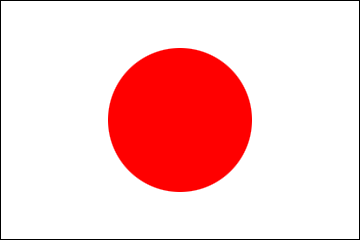Culture & Education
Mirai Program - Paul Finn
I was told about the MIRAI programme by the head of the Japanese department in the University of Limerick, Barbara Geraghty, and I don’t think I will ever be able to thank her enough. I feel UL has been gaining a reputation for some years now for producing Japanese language graduates of a very high calibre and, since I am now in my fourth year, I feel the pressure to follow in their footsteps and it drives me to try my best.
Since I began to study in UL, I have had a great interest in the JET programme. However, the chance to visit Japan with MIRAI before I have even graduated, free of charge no less, and to gain a deeper understanding of Japanese culture was, for me, a dream come true. When I started reading about the details of the programme, I honestly couldn’t believe that such an opportunity could exist.
Sometimes I feel that for those studying a culture like that of Japan, the topics can seem distant and we feel somewhat withdrawn from it all. Japan is, admittedly, very far away. However, I think in Ireland we are becoming more and more aware of the importance of maintaining good international relations and, for all our differences, Japan is a country with which, I now see, we share so many similarities.
I firmly believe that the MIRAI programme is a credit to the forward-thinking Japanese government. To welcome such a large number of students and to share with us, so extensively, the many sides of this beautiful country was a privilege to say the least. There are many different aspects of the programme which I am sure will stay with me for the rest of my life.
For example, by becoming involved with the MIRAI programme I was able to sample some of the most varied cuisine I have ever seen. Some dishes I struggle to even describe and I have to rely on photographs to show people how diverse it really was. I can tell my friends that food was delicious, but the word still seems to come short. Moreover, the shrines and temples of Japan blew me away. Our MIRAI guides taught us a lot about these mysterious spaces where, for me, it seemed that time itself stood still.
On the other hand, it was clear from the very beginning that Japan was not altogether “traditional”. When you find yourself in the centre of the Toyko metropolis, few could blame you for wondering whether you took a wrong turn and were somehow teleported forward in time. The streets are electric both night and day. However, despite how busy people are, they never shy away from giving you directions.
But we didn’t just remain in Tokyo. In Hiroshima, MIRAI brought history to life for me. By listening to an atomic bomb survivor speak about her experience, I gained a much deeper understanding of the horrors of nuclear war. Before this I had never reflected so deeply on the lasting impacts of the nuclear bombs on both the Japanese people and the world. Another enriching experience was definitely the chance to discuss Brexit and TPP with Japanese students. Sharing our opinions on such diverse issues was very worthwhile and I am still in contact with many of these Waseda University students.
I am very thankful to have had such an excellent experience and once more I commend the MIRAI programme for all that they have achieved in the short time which they have been on the go. They offer us a great example of an innovative way which we can spread culture awareness and strengthen international relations.
